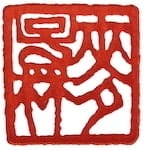Many of us were exposed to gua sha in our schooling, but it was more like a footnote than anything else. Over in Asia gua sha is a well-used aspect of the folk medicine. Hardly a grandma or auntie that doesn’t know how to raise a rash with a soup spoon. But most docs over there don’t use it. So it is understandable how in teaching “medicine” here in the west we’d get the minimal exposure we do.
In this episode we sit down with the “Gua Sha Queens” and learn why this simple technique should be part of your pain relief toolkit. Additionally we learn how it can be helpful for a variety of internal health conditions such as digestion, various inflammatory conditions, respiratory illness and even psycho-emotive issues.
This is an aspect of our medicine that we really should own and use, as it’s simple, safe and effective. Listen in as we discuss how to raise a rash and make your patients love you.
In this episode we discuss:
- The spirit calming effects of gua sha.
- How to recognize an incomplete gua sha treatment
- Gua sha’s ability to create a local and systemic anti-inflammatory response.
- How gua sha is not just for external invasion and coughs, but also helps with various presentations of blood stagnation, auto-immune conditions, digestive and emotional issues like anxiety.
- Treating acid reflux and other digestive conditions by using gua sha on the back in the area of the diaphragm.
- Watching for tongue and pulse changes, as they can happen rather quickly.
- How different types are sha are indicative of different underlying conditions.
- Safety, sanitation and why you shouldn’t use porous gua sha tools, as they cannot be properly cleaned and disinfected.
- The profound pain relieving effect of gua sha.
- Why the Chinese medicine community needs to own gua sha.
- Follow the sha, let the body guide you.
- The usefulness of gua sha in treating concussions as it not only helps the physical recovery, but the emotion aspects as well.
Clinic tip: Don’t be afraid of treating patients with full blown yang ming stage flu symptoms, including fever, coughing copius yellow phlegm: Gua Sha the upper back, neck and shoulders, then have the patient lie facing up and gua sha the upper chest around Lu-1 & Lu-2 area. You might find them texting you later that their temperature is normal and their lungs are clear!
The guests of this show
 Sandy Camper, M.Ac., L.Ac. Gua Sha Queen. I was a high school chemistry teacher when I lifted a box of chemicals for a lab and injured my back, putting me in excruciating pain. I decided to try acupuncture treatment and I was amazed that in two treatments my pain was reduced to zero! A few years later I found I was seeing two different specialists for two different conditions without any improvement. I sought out acupuncture again, and when the practitioner brought out a chart and showed me how these two seemingly unrelated issues had the same root cause, I was thrilled. She said that by treating the underlying imbalance both symptoms would improve, and that was exactly what happened. I was hooked! I never learned anything about gua sha in acupuncture school. I had been practicing for years before a classmate performed gua sha on me for the first time, and I immediately experienced a profound sense of patience! The incredible results I continue to witness in my patients from gua sha treatments have propelled me, along with fellow gua sha enthusiast Kathryn Nemirovsky, to teach other acupuncturists and body workers this amazing technique. With my background as a scientist, I continually geek out on the research that reveals facets of how our medicine affects the physical, emotional and psychological aspects of a person. It’s the instantaneous and palpable shifts in consciousness from treatment that can ch ange a person’s life in a moment that keep me electrified about Chinese Medicine.
Sandy Camper, M.Ac., L.Ac. Gua Sha Queen. I was a high school chemistry teacher when I lifted a box of chemicals for a lab and injured my back, putting me in excruciating pain. I decided to try acupuncture treatment and I was amazed that in two treatments my pain was reduced to zero! A few years later I found I was seeing two different specialists for two different conditions without any improvement. I sought out acupuncture again, and when the practitioner brought out a chart and showed me how these two seemingly unrelated issues had the same root cause, I was thrilled. She said that by treating the underlying imbalance both symptoms would improve, and that was exactly what happened. I was hooked! I never learned anything about gua sha in acupuncture school. I had been practicing for years before a classmate performed gua sha on me for the first time, and I immediately experienced a profound sense of patience! The incredible results I continue to witness in my patients from gua sha treatments have propelled me, along with fellow gua sha enthusiast Kathryn Nemirovsky, to teach other acupuncturists and body workers this amazing technique. With my background as a scientist, I continually geek out on the research that reveals facets of how our medicine affects the physical, emotional and psychological aspects of a person. It’s the instantaneous and palpable shifts in consciousness from treatment that can ch ange a person’s life in a moment that keep me electrified about Chinese Medicine.
Kathryn Nemirovsky, M.S.O.M., L.Ac., Gua Sha Queen
If someone had told me in my earlier years that I’d be some kind of a doctor today, I’d have told them they were crazy. Lucky for me that life is wild and unpredictable. When I was struggling with a health issue for which conventional medicine had little to nothing to offer, a friend suggested I try acupuncture. As I lay on the table to receive my first treatment in the clinic at the school I would later attend, the intern asked me, “Are you a student here?” I said I wasn’t. She smiled and said, “You will be.” I laughed.
It was easy to fall in love with the richness and poetry of Chinese medicine. Now approaching my 10th year of practice, what has come as an absolutely thrilling surprise is just how many people I’ve been able to help, often with the simplest of means.
Gua sha was barely covered at the TCM school I attended. There wasn’t much time or attention given it, and it made so little an impression on me that I didn’t use it at all for my first few years of practice. It wasn’t until I was experiencing debilitating hip pain, and something I read in an online discussion group prompted me to use it on myself, that it came back into my awareness. It was a revelation! The relief was so immediate and so complete, I wondered to myself, “Why am I not doing this on my patents?!” Since then I’ve been what you might call a gua sha missionary, preaching and spreading the gua sha love.
Clinic tip:
When applying gua sha, don’t assume the patient will offer feedback on their own. Continually check in to make sure the amount of pressure you’re using isn’t too much. If a patient is very sensitive, doing a series of lighter treatments, bringing up just enough sha to make even a small difference in their pain or range-of-motion, will likely result in less discomfort and more trust over time. Remember that everyone’s different. It can be counter-productive to do too much at once if it results in an unpleasant experience for the patient.
Links and Resources
Here is a randomized controlled trial on The Effectiveness of Traditional Chinese “Gua Sha” Therapy in Patients with Chronic Neck Pain.
This study looks at The Effects of Gua sha on Heart Rate Variability in Healthy Male Volunteers under Normal Condition and Weightlifters after Weightlifting Training Sessions.
Research that shows upregulation of the heme oxygenase-1 (HO-1) gene expression in response to Gua Sha.
The Science of Gua Sha.
Here’s an article on gua sha published by Harper’s Bazaar (of all places)
Arya Nielsen’s website is a treasure trove of information about gua sha.
You can find Arya’s book on gua sha over on the big river of books.
Join the discussion!
Leave a comment on Qiological’s Facebook page.
